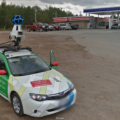Overview of New Energy Vehicles
New energy vehicles (NEVs) are shaping the future of transportation. These include not only electric vehicles (EVs) but also hybrids and hydrogen-powered cars. They play a key role in reducing greenhouse gas emissions, vital for tackling climate change.
Electric cars are perhaps the most popular type of NEV. They run on electricity stored in batteries, which means they don’t pollute the air with carbon dioxide emissions.
An exciting update is that EV sales are rising fast. In 2023, nearly 14 million electric cars were sold worldwide. China, Europe, and the United States lead this growth.
An important factor in the success of electric cars is their source of electricity. The cleaner the energy, like solar or wind, the greater the environmental benefits.
Electric cars also promise a quieter and smoother driving experience. They require less maintenance compared to gasoline cars, often making them a cost-effective choice.
Electrification of transportation doesn’t stop at cars. Buses, trucks, and even ships are gradually adopting electric or hybrid technologies. This shift is crucial for reducing emissions in all transport sectors.
As technology advances, you might see more sophisticated NEVs on the roads. Models like Tesla’s upcoming autonomous vehicles show how self-driving and electric cars are merging.
The journey toward a cleaner, electrified future in transportation is well underway, offering significant benefits for both the environment and drivers like you.
Advancements in Electric Vehicle Technology
Electric vehicle technology is progressing rapidly. Key developments involve better batteries, more efficient energy use, and seamless integration of autonomous driving tech.
Battery Innovations
Battery technology is advancing at a fast pace, making electric vehicles (EVs) more efficient and practical. Companies like Tesla are leading the charge with models such as the Tesla Model 3, which boasts impressive range and power. One significant breakthrough is in battery chemistry, allowing for longer distances on a single charge.
MIT researchers are working on lighter and more powerful batteries that recharge quickly. Regenerative braking is another advancement, helping to extend battery life by converting motion into electrical energy while slowing down. These innovations make EVs a more viable and appealing choice for your driving needs.
Sustainability and Energy Use
EVs are changing how energy is used and consumed. These vehicles promise lower emissions and less reliance on fossil fuels. They become even more energy-efficient through technologies like vehicle-to-grid (V2G), which allows cars to send power back to the grid when not in use.
This helps balance energy demands and optimizes how energy is distributed. Sustainable practices, like using renewable energy sources for charging, further reduce the carbon footprint. These steps ensure that your EV contributes positively to the environment and energy conservation efforts.
Autonomous Driving Integrations
Autonomous driving technology is revolutionizing the way you can travel. Companies like Zoox are working on robotaxis with innovative designs, featuring features like internally-facing seats and no steering wheels. Tesla is also incorporating self-driving features into their vehicles, making them more convenient and futuristic.
The integration of autonomous tech is transforming how people view traditional driving. These vehicles are equipped with sensors and algorithms to navigate safely through traffic. Support for autonomous capabilities makes EVs a smart choice for those interested in the future of transportation technology. The progress in this area is redefining mobility and creating more options for effortless travel.
Environmental Impact
New energy vehicles, such as electric and hybrid cars, play a significant role in reducing emissions and meeting net-zero goals. These vehicles help decrease air pollution and lower greenhouse gas emissions, which is crucial for combating climate change. Let’s dive into how they help the environment by cutting emissions and supporting ambitious climate targets.
Emissions Reduction
Using electric vehicles (EVs) can greatly cut down on air pollution compared to traditional fossil fuel cars. EVs emit no tailpipe carbon dioxide, which is a major component of greenhouse gases. When you choose an EV for a self-driving tour, you help reduce your carbon footprint and contribute to cleaner air.
While some emissions come from electricity production, these can be reduced with renewable energy sources. Solar and wind power are becoming more affordable, further lowering emissions linked to EV usage. Transitioning to new energy vehicles supports cleaner skies and healthier communities, making your travel eco-friendly and responsible.
Net-Zero Emissions Goals
Achieving net-zero emissions means balancing the amount of emitted greenhouse gases with those removed from the atmosphere. Many countries have set goals to reach net-zero by mid-century. New energy vehicles are a critical part of this plan. By using EVs in self-driving tours, you help accelerate the move toward these climate-friendly targets.
Increased adoption of EVs will lessen dependence on fossil fuels over time. As more people switch to electric cars, it encourages technological advancements and highlights the importance of sustainable travel choices. Your choice to embrace new energy vehicles can make a real difference in reaching these ambitious environmental goals.
Market Trends and Consumer Adoption
You might be curious about the growth and acceptance of new energy vehicles, especially in the context of self-driving tours. The landscape is shifting rapidly as we see more electric vehicles (EVs) on the road, increased sales, and various economic incentives driving this change.
Global Electric Car Stock
Worldwide, the number of electric cars is climbing steadily. By 2023, global electric car stock reached around 40 million vehicles. This increase is mainly fueled by advancements in battery technology, stricter emissions regulations, and broader charging networks.
In regions like China, Europe, and the U.S., you will find the highest concentrations of these vehicles. Governments here are investing heavily in the necessary infrastructure to support the growing demand.
Electric Car Sales and Registrations
The sales figures for electric cars show an impressive upward trend. Nearly 14 million electric cars were sold in 2023 alone. This marked a 35% increase compared to the previous year. A large share of these sales happened in China, followed by Europe and the United States.
If you’re considering joining the electric vehicle movement, there has never been a better time. The market is competitive, and manufacturers are continually improving features and affordability.
Influence of Economic Incentives
Economic incentives play a big role in boosting electric vehicle adoption. Purchase subsidies and tax breaks are among the top benefits available to buyers. These incentives lower the initial cost, making EVs more attractive.
Countries worldwide offer different fiscal strategies to encourage people like you to switch to electric. In regions with strong government support, EV adoption rates tend to be higher, reflecting the influence these incentives have on consumer decisions.
Challenges and Solutions in EV Infrastructure
Expanding electric vehicle (EV) infrastructure is crucial to supporting self-driving tours and wider EV adoption. Addressing the challenges of building a robust charging network and managing energy grid demands are key steps toward creating a more supportive environment for EVs.
Charging Network Expansion
One big challenge for the growth of EVs is the lack of a widespread charging network. Charging points are not yet as common as gas stations, making long trips tricky. You might find it difficult to plan tours if charging stations are far apart or only in certain areas.
A solution is to increase investment in EV infrastructure. Cities can promote policies that encourage new charging stations in prime locations, like highways and tourist spots. Start-ups are also finding innovative ways to draw power from existing structures. This approach ensures there’s enough coverage for all your travel needs.
Moreover, collaboration among governments, utility companies, and private firms is essential. They can work together to create a seamless network of reliable and fast charging points that meet the needs of all travelers.
Energy Grid Demands
With more EVs on the road, the energy grid feels the pressure. Electric cars draw a lot of power, especially if many plug in at the same time, which could lead to energy shortages if not managed properly.
To counter these challenges, technology plays a big role. Smart charging systems can distribute energy evenly, preventing overloads during peak times. They optimize the charging schedules to use energy when it’s cheapest and least in demand. This means as an EV owner, you can enjoy lower costs and more reliable charging.
Another solution is investing in renewable energy sources. By increasing the use of solar and wind power, the overall energy demands of EVs can be sustainably managed without straining the grid. This not only supports EV growth but also helps reduce carbon emissions.
Impact of External Factors on EV Progression
Electric vehicles (EVs) are navigating through various external factors that shape their growth and adoption. Industry changes and the Covid-19 pandemic are key influences.
Automotive Industry Dynamics
The automotive industry is on a journey towards electrification. Companies like General Motors, Ford, and Volkswagen are investing heavily in EV technology. They’re setting ambitious goals to produce more electric cars, focusing on innovation and sustainability.
Assembly plants are being retooled to build EVs instead of traditional vehicles. This shift challenges industry norms but opens new opportunities for energy efficiency and economic growth. As these companies prioritize EV production, you’re likely to see more options and advancements in the market.
Pandemic and Recovery
The Covid-19 pandemic disrupted global supply chains and assembly plant operations, affecting EV production. However, it also accelerated a shift towards greener technologies. During recovery, governments and companies focused on clean energy initiatives and supported EV adoption.
EV sales continued to grow despite disruptions. Vaccinations and increased government incentives spurred economic recovery, boosting consumer confidence in buying electric cars. Your choice of an EV not only contributes to this growing trend but aligns with a broader focus on sustainable living and innovation.









